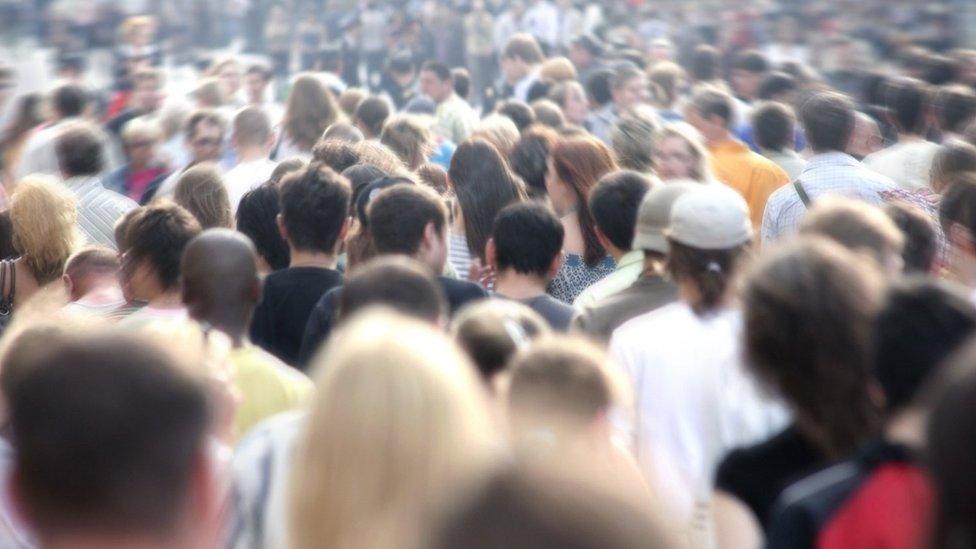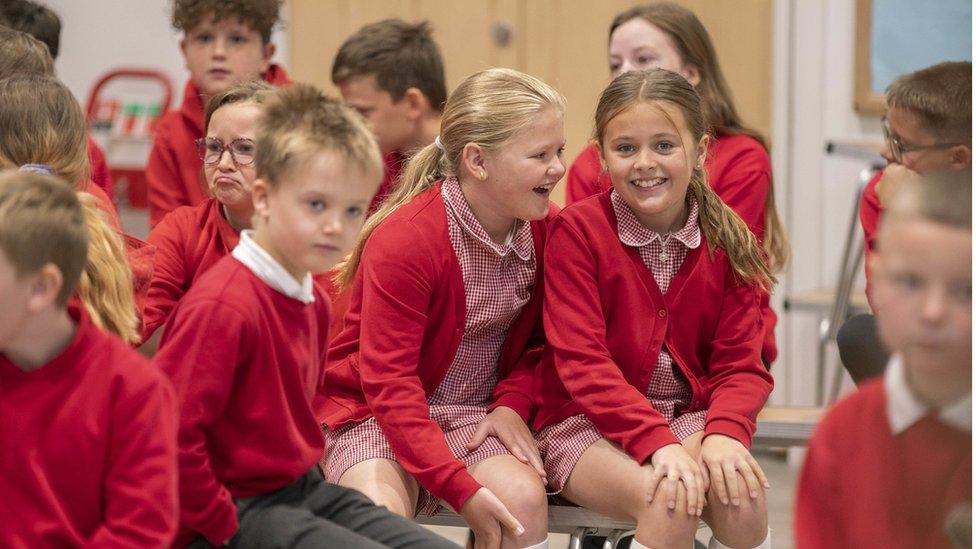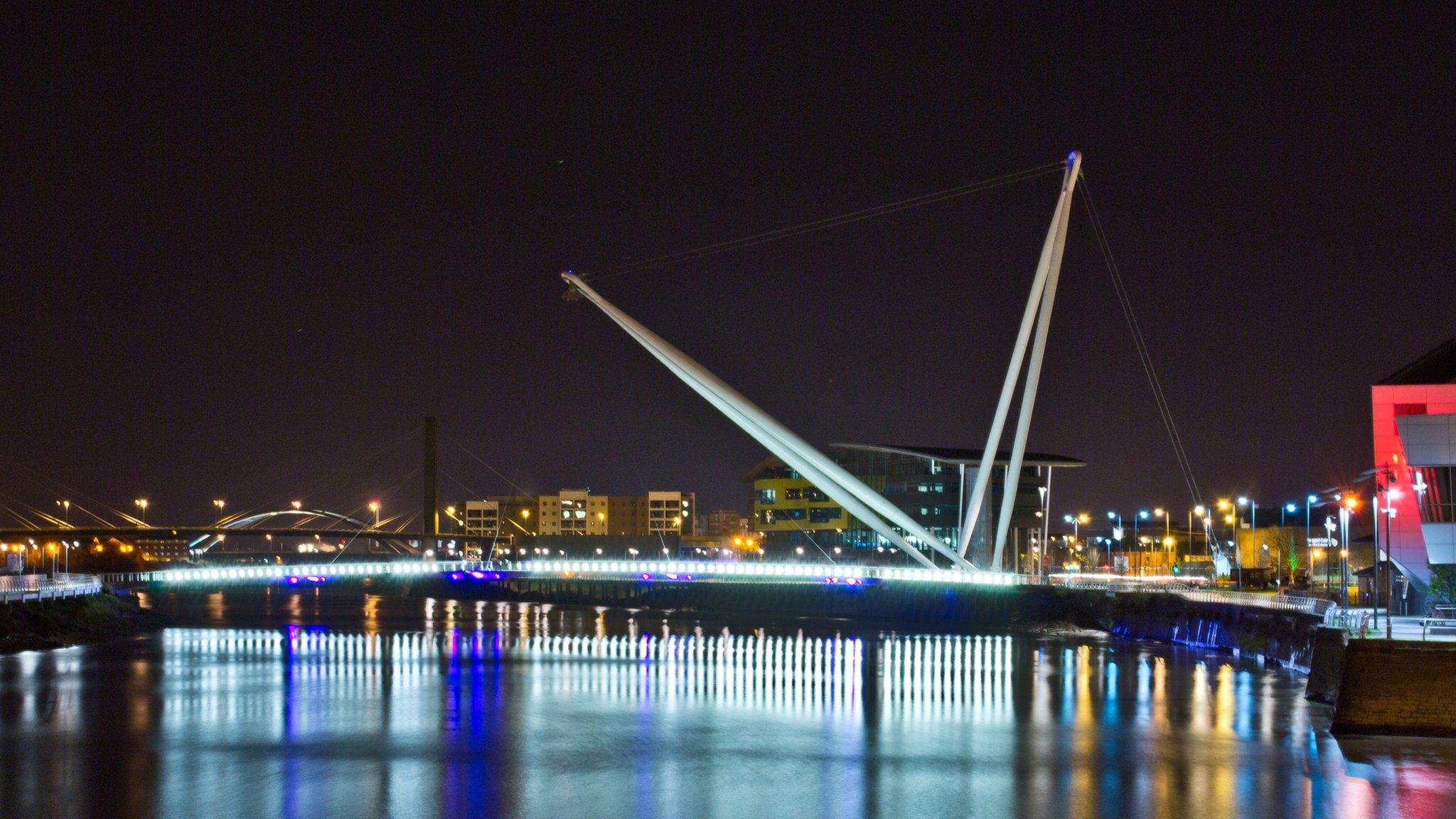Census: Less than half of people in Wales are Christian
- Published

Blaenau Gwent has the lowest proportion of Christians in Wales
Less than half the population of Wales now consider themselves Christian, Census figures show for the first time.
The results for 2021 also show the number calling themselves "not religious" has jumped to 46.5%.
The Bishop of St Asaph said it was no surprise but showed the "huge challenge for the church" to demonstrate why it believed "faith is life transforming".
Meanwhile, more than 55% of people living in Wales identify as Welsh, down from 57.5% 10 years before.
The number calling themselves British-only in Wales rose from 16.9% to 18.5%.
Wales had a greater fall in people reporting their religion as Christian than across England and Wales as a whole - a 14 percentage point fall from 57.6% a decade ago to 43.6% in 2021.
Those giving a response of "no religion" saw a 14.5 percentage point rise from 32.1% in 2011 to 46.5% in 2021.

The local areas with the highest proportions saying they were not religious were in Caerphilly (56.7%), Blaenau Gwent (56.4%), and Rhondda Cynon Taf (56.2%).
This was more than the highest proportion in a local area in England - Brighton and Hove (55.2%).
Broken down at a neighbourhood level, Cathays in Cardiff had the most people saying they had no religion, followed by Coity in Bridgend.
The fewest people calling themselves Christian were in Blaenau Gwent (36.5%, down from 49.9% 10 years ago) and Caerphilly (36.4%, down from just over half in 2021.)
The Office for National Statistics (ONS), which publishes the Census data, said the question on religion was voluntary - but more people chose to answer it this time - and factors behind the results could also include ageing population, fertility, mortality, and migration.
What does the Census tell us about religion in Wales?
Flintshire, Anglesey and Conwy were the only three local authority areas with more than half of people calling themselves Christian
Only 36% of people in Blaenau Gwent, Caerphilly and Rhondda Cynon Taf called themselves Christian
66,950 people said they were Muslim, with more than half of them living in Cardiff. This is a rise in proportion from 1.5% to 2.2% of the population in 10 years.
There were 12,248 Hindus with more than half living in Cardiff and Swansea.
Cardiff had the largest Jewish population in Wales - 690 people out of 2,044 across Wales.
There was little change in other religious groups, with Sikh (0.1%) and Hindu (0.4%) of the Welsh population.
"Pagan" had 5,000 (0.2%) responses, while 243 people said they were "heathen" and 81 people said they followed "witchcraft"
The Bishop of St Asaph, the Rt Rev Gregory Cameron said: "We have become a society where we can be more honest about faith, and societal expectations are, if anything, secular rather than religious, so to profess a faith is to stand out, rather than to blend in.
"These figures offer no surprises but remind us of the huge challenge for the church to be able to demonstrate to society why we still believe faith is life transforming."
Another 3,237 (0.2%) of people also expressed they had no religion by describing themselves as atheist, agnostic or humanist.
Wales Humanists coordinator Kathy Riddick said while Wales being officially the least religious part of the UK was not a new development, it was something that politicians in Wales were "overdue to properly address" in law and public policy.
"Thankfully in navigating these changes, Wales has a strong tradition of supporting freedom of religion or belief to draw on, from disestablishment over 100 years ago to the creation of the most inclusive curriculum in the UK just last year," she said.
"There are still many areas where being non-religious in Wales comes with disadvantages - from hospital chaplaincy, which fails to include any non-religious support across Wales, to school assemblies where daily acts of Christian worship remain mandatory, and in many national events where religious groups are represented but non-religious beliefs are not."

What do we know about identity?
The number identifying as Welsh is down from 1.8m to 1.7m - or 55.2%.
The biggest proportions identifying as Welsh-only were in Merthyr Tydfil, Rhondda Cynon Taf and Caerphilly.
The fewest were in Flintshire and Monmouthshire.
The community with the most people identifying as Welsh-only was Pontardawe in Neath Port Talbot, based on local areas of similar sizes.
Those "British" as a national identity living in Wales rose from 519,000 in 2011 to 574,000 in 2021.
The largest proportions identifying as British-only lived in Monmouthshire, Flintshire and Powys.
The most British identifying local community in Wales was in Ewloe and Hawarden in Flintshire.
More people are also calling themselves both "Welsh and British" - up to 8.1% of people
4.2% (132,000) reported a non-UK identity only
1.2% (37,000) reported at least one UK and another non-UK identity
Wrexham had the biggest population of Polish people - 3,290 identifying.
New figures on ethnicity and language
There was also new information about ethnicity and language in Wales.
There were 89,000 people - 2.9% - who belong to Asian, Asian British or Asian Welsh ethnic groups, with nearly 35,000 living in the capital Cardiff. This compared to 2.3% in 2011.
Those who responded that they were Black, Black British, Black Welsh, Caribbean or African was 0.9% of the population (28,000). This compared to 0.6% in the last Census.
"Mixed or Multiple ethnic groups" was 1.6% (49,000) - up from 1%, - and other ethnic groups made up 0.9% (26,000) - an increase from 0.5%.
Those belonging to white under ethnic groups was 2.9 million - or 93.8%.
For the first time, the Census shows2,000 people identified as Roma in Wales (0.1%).

Cardiff has by far the highest proportion of its population coming from an ethnic group - 21.2%, followed by Newport (14.8%) with the lowest on Anglesey and in Blaenau Gwent.
Polish was the second most common language after English or Welsh in Wales (spoken by 21,000 or 0.7% of the population).
Arabic was the next most common main language in Wales (spoken by 9,000, 0.3%), with Cardiff accounting for 5,000 of these Arabic speakers.
What is the Census used for?
The details the Census provides are used to help policy-makers and organisations make decisions on how to provide a whole range of services in the future.
The Census - taken in 2021 - has already told us that the population of Wales had risen to record levels. and given us figures on deprivation, migration and where people were born.
This is the third release of data from its results and future publications will include figures on the Welsh language.
- Published29 November 2022

- Published2 November 2022

- Published28 June 2022
